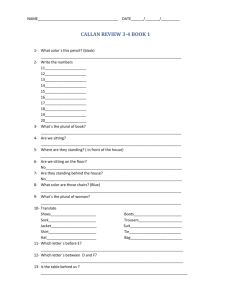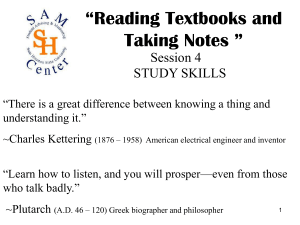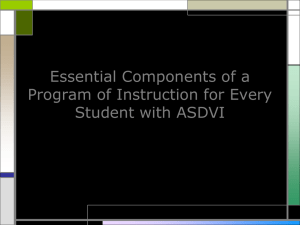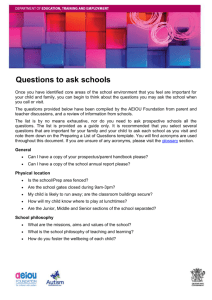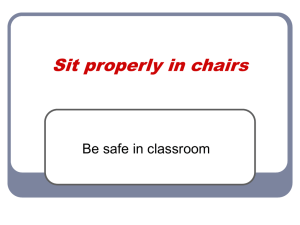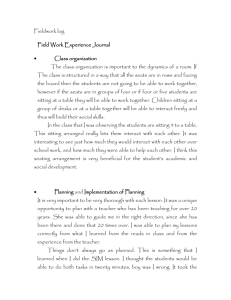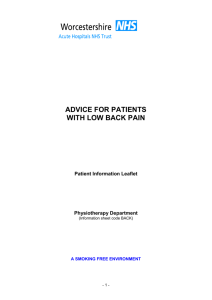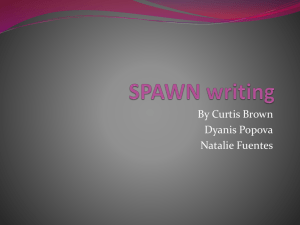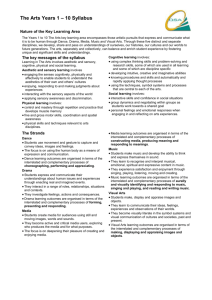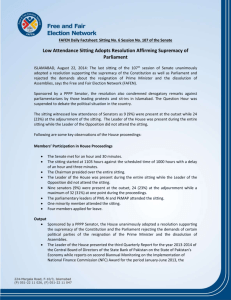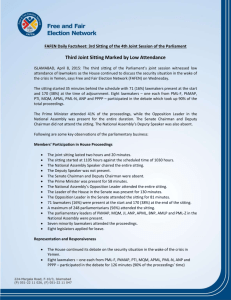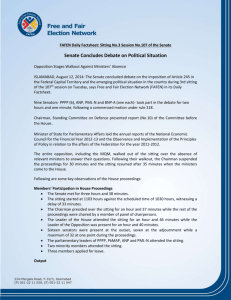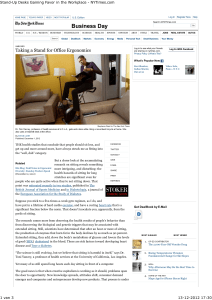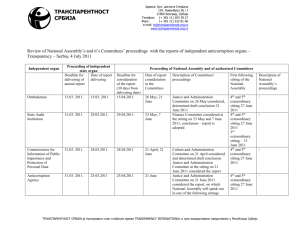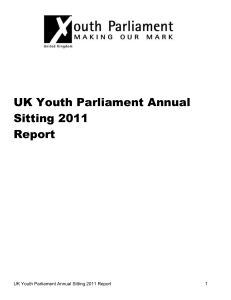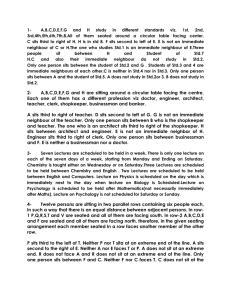Tips for classroom layout
advertisement
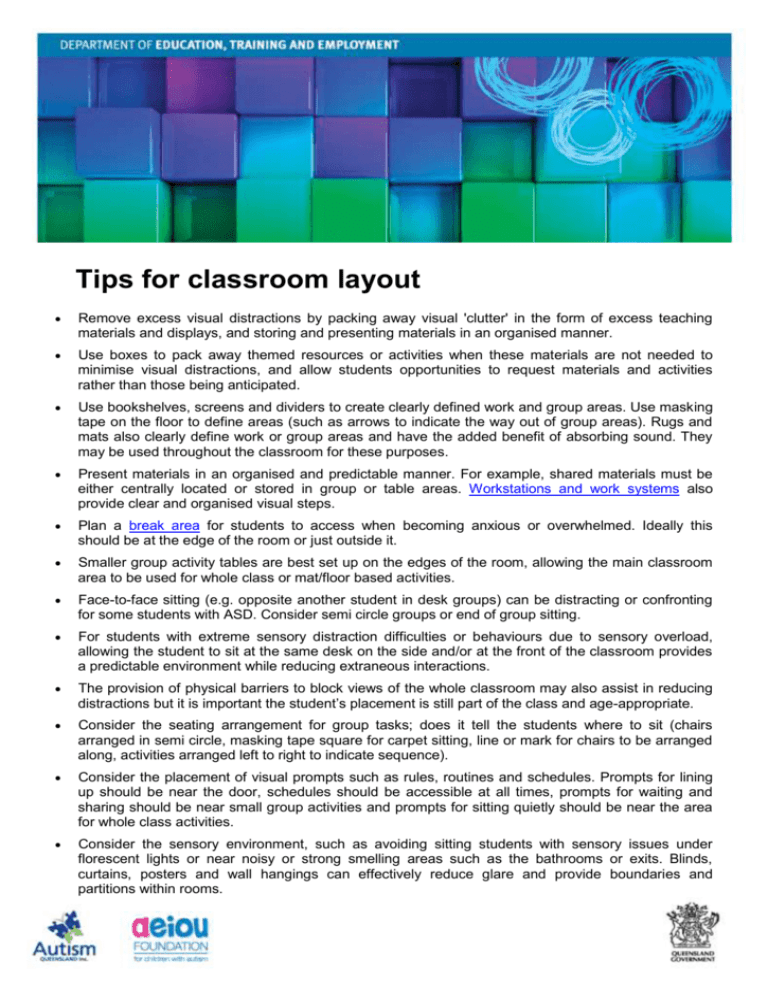
Tips for classroom layout Remove excess visual distractions by packing away visual 'clutter' in the form of excess teaching materials and displays, and storing and presenting materials in an organised manner. Use boxes to pack away themed resources or activities when these materials are not needed to minimise visual distractions, and allow students opportunities to request materials and activities rather than those being anticipated. Use bookshelves, screens and dividers to create clearly defined work and group areas. Use masking tape on the floor to define areas (such as arrows to indicate the way out of group areas). Rugs and mats also clearly define work or group areas and have the added benefit of absorbing sound. They may be used throughout the classroom for these purposes. Present materials in an organised and predictable manner. For example, shared materials must be either centrally located or stored in group or table areas. Workstations and work systems also provide clear and organised visual steps. Plan a break area for students to access when becoming anxious or overwhelmed. Ideally this should be at the edge of the room or just outside it. Smaller group activity tables are best set up on the edges of the room, allowing the main classroom area to be used for whole class or mat/floor based activities. Face-to-face sitting (e.g. opposite another student in desk groups) can be distracting or confronting for some students with ASD. Consider semi circle groups or end of group sitting. For students with extreme sensory distraction difficulties or behaviours due to sensory overload, allowing the student to sit at the same desk on the side and/or at the front of the classroom provides a predictable environment while reducing extraneous interactions. The provision of physical barriers to block views of the whole classroom may also assist in reducing distractions but it is important the student’s placement is still part of the class and age-appropriate. Consider the seating arrangement for group tasks; does it tell the students where to sit (chairs arranged in semi circle, masking tape square for carpet sitting, line or mark for chairs to be arranged along, activities arranged left to right to indicate sequence). Consider the placement of visual prompts such as rules, routines and schedules. Prompts for lining up should be near the door, schedules should be accessible at all times, prompts for waiting and sharing should be near small group activities and prompts for sitting quietly should be near the area for whole class activities. Consider the sensory environment, such as avoiding sitting students with sensory issues under florescent lights or near noisy or strong smelling areas such as the bathrooms or exits. Blinds, curtains, posters and wall hangings can effectively reduce glare and provide boundaries and partitions within rooms. The positioning of the teacher or main source of information (includes class schedule, board, screen, activity lists) should be in front of the student. May be effective for support staff to sit or position themselves behind or near students so as not to interrupt the exchange between the student and teacher or main source of information. Consider where students will store personal items. Some students with ASD find it difficult to separate from preferred items but may eventually be persuaded to place these items in a basket or box which can be progressively moved off the desk and towards a storage area over the term or year during work periods. Consider using mats or 'waiting chairs' to indicate areas of importance such as where the front of the line starts for going outside, where to sit for helping with the schedule, where to stand to wash hands, where to go to put on sunscreen and where to sit for reading groups. If planning to change the classroom layout, pre-warning the student with ASD by discussing this with them before it happens and showing a visual map of the new layout may assist the student with this change. Consider using a ‘do not enter’ sign or symbol representation for 'out of bounds' or adults only areas.
